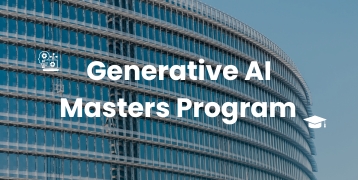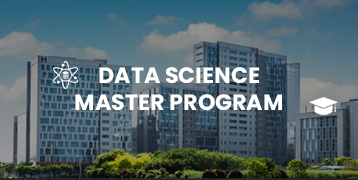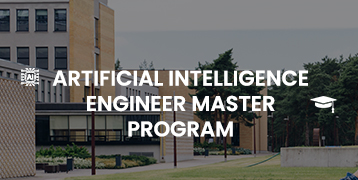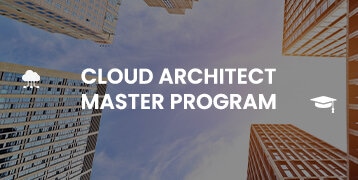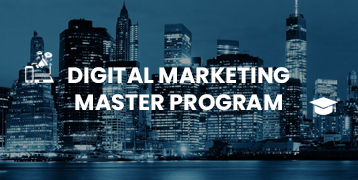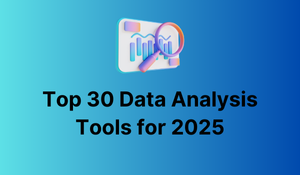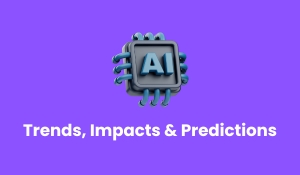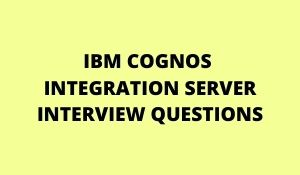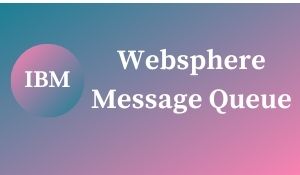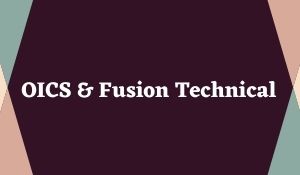
This article will cover the Oracle Integration Cloud (OIC) overview for Beginners and it also consists of some of the key points that are helpful for the beginner.
1. The SOA Cloud Service and Oracle Integration Cloud (OIC) are the two products of cloud integration that have been launched by Oracle in this globalized era. It is considered as the offering of PaaS from Integrations.
2. Oracle Cloud Integration: The first question that arises for every user/customer is why these two products?
The foremost difference between the two service platforms is the function ranges. The Cloud Service of SOA is called the SOA Suite in the cloud and can be intended for developers of hardcore who are used to working with the suite of SOA and willing to continue leveraging the various multiple capabilities such as MDS to achieve the very complex integrations.
OIC is considered more of a service in lightweight that can be used to achieve lightweight and simple integrations that are not needed with much complexity. Oracle can be intended OIC by the inclined technical clients without the requirements for a developer of hardcore to come in and save the day!
One of the main differentiating factors for the OIC has been taken from other products of the cloud integration which is termed as the rich variety of connectors they can offer including all the connections to other products of the cloud-like Eloqua, RightNow, SalesCloud, and various social media such as Twitter, Facebook, LinkedIn and so on.
3. How does Oracle Integration help the user?
It can connect the on-premise applications with the Cloud (Integration Cloud Service) and can also help in monitoring, designing, managing, and monitoring the connections between multiple applications.
- Can create Applications Visually (Visual Builder Cloud Service)
- Can manage and automate the business Process (Process Cloud Service)
Note: Consider in a nutshell, the Oracle Integration is referred to as the combination of three different Services (Process Cloud Service + Integration Cloud Service + Visual Builder Cloud Service).
4. The user can register for the FREE trial of Oracle Cloud Account by using a proper step-by-step guide.
5. Once the registration has been done, the log-in to Cloud Console can be made with the below steps while navigating the cloud service of the Oracle Integration.
- First, log in to the account of Oracle Cloud.
- Then click on the menu called hamburger which is under the heading Platform and Solution.
- Click on Application Integration and finally click on the Oracle Integration button.
6. The further task of the user/customer is to create the Oracle Integration instance.
Note: The user has to stay tuned for the Step-by-step instructions to create the instance of Oracle Integration in the next Post.
Besides, the user/customer has to check blogs on how to monitor and manage integration Errors in the cloud of Oracle Integration.
7. Once the customer/user has created the Oracle Integration instance, they should navigate the Oracle Integration by clicking on Integrations and it will also show the options that are available then.
UI (User Interface) introduction to the Integration:
- Multiple design options are available in the menu of integration. Here we have a short introduction to the Tabs:
- Integrations: Integrations can be used to process connection utilization to implement the process of business.
- Lookups: There is a bit like in the SOA Suite which can be used to cross the reference values of the same element/attribute when mapping has been made from one system to another system.
- Connections: Different connectors can be utilized to communicate with external applications. Communication can be done by using conventional systems like FTP, File, and so on with the new social media and some other types of applications, like Facebook, LinkedIn, Evernote, Twitter, etc.
- Agents: Agents can be used to connect various types of on-premise applications.
What is Oracle Fusion?
Initially, Oracle came up with the applications of Fusion in 2011. Some modules like HCM, CRM, and some Financials have been proven successful. With a blooming cloud market, the making mark of the Oracle Cloud in the applications of Supply Chain Management has been made. By considering the supply chain complexity, Oracle has come up with high-level improved features and functionality to cater to the requirements of the Client.
Oracle Supply Chain Management Cloud has some modules. For an easy way of understanding the high-level differences between cloud applications and EBS are provided wherever there is a requirement.
Related Courses
| Course Name | Enroll Now |
|---|---|
| Oracle Integration Cloud Service (OIC) Training | Enroll Now |
| Oracle Fusion HCM Cloud Training | Enroll Now |
| C++ Training | Enroll Now |
| Oracle SCM Training | Enroll Now |
| ORACLE SQL TRAINING | Enroll Now |
Inventory and Costing:
Inventory management can handle the transactions of material within the warehouse. The Inventory module has most of the common features when compared to the EBS. Some of the features like move orders, Org transfers, cycle counting, and physical inventory are present from the release of the Cloud Applications as well. The product can acquire strength within the functionality of the REL 11 with the introduction of fulfillment techniques like Back-to-Back, and Internal Material Transfers ( IR-ISO in EBS), and can be consigned to Inventory flows. Moreover, in this module inventory, the replenishment can be restricted to the Min-Max planning.
Pricing:
In the Fusion applications, the pricing can also be re-architectured. There a new modules that are used in the latest Marketing principles to price an item. The principles can be defined based on the segmentation and Customer Profile. Pricing products can offer flexibility in creating strategies to handle the segments of the customer efficiently. In contrast to the EBS, the product can look new. Most of the heard features like modifiers and Order qualifiers are handled in an entirely different way. Pricing can run on algorithms, matrices, and the Service Mapping.
Product Management:
Oracle has come up with a Product Management module of the information to handle the information/data of the product. The Product Hub can provide various product solutions for product information management and Master Data management. Product Hub can be pre-integrated with some other modules of the Oracle ERP cloud. The product is a feature-rich and mature kind. Many of the EBS functionalities are available in the Cloud at present.
Manufacturing:
Manufacturing is considered as the late entry into the applications of SCM stack. Released in R11 can be used to manufacture the module handles in Plant, Work centers / work areas. Work orders and work definitions. Moreover, the features can be available only for the execution, managing, and monitoring of the Discrete manufacturing. As of this date, Oracle does not have all kinds of functionalities to support the Process of Manufacturing.
Order Management Cloud:
Initially, Oracle launched Order Management with the name ‘Order Orchestration’, with Order Entry only with the CPQ cloud. From Release 11 of Cloud Applications, Order Management has launched, in which the orders of the Sales can be created within the application of the native Cloud itself. Order Management is entirely re-architectured compared to the E-Business Suite. There is a new product that is highly technical in its features and can be built on a technology called FMW (Oracle Fusion SOA Middleware). By having the built-on SOA, FOM can be integrated with any kind of system through web services.
Distributed Order Orchestration (DOO) is considered the heart of Order Management Cloud, in which it can orchestrate the sales orders and can track the entire fulfillment lines until it gets its completion. DOO can be integrated into the systems of third parties to capture the fulfillment.
Oracle EBS R12.2 Overview:
The Oracle E-Business Suite Architecture is defined as the framework for various multi-tiered and distributed computing which can be used to support the products of Oracle E-Business Suite. In this type of model, several services or servers can be distributed among the three tiers or levels.
Oracle E-Business Suite (EBS) aka Applications can be integrated into the business application that consists of below features:
- Human Resource Management System (HRMS)
- Enterprise Resource Planning (ERP)
- Supply Chain Management (SCM)
- Customer Relationship Management (CRM)
- Advanced Procurement
- Financial Management
- Project Portfolio Management
- Service Management
Check out: All the operating systems that are supported by Oracle EBS R12.2.
Roles & Responsibilities of the applications that belong to Oracle DBA
An Oracle dba is considered as one platform that manages Oracle EBS in everyday tasks for the company/enterprise/organization such as:
- Patching of EBS for the new version
- Installation/Configuration of EBS
- Startup/Shutdown of Services
- Cloning of the existing System.
- Managing the stack technology
- Registering Schema and Custom Application
- Troubleshooting
- Requests of the Managing Concurrent
- Password Management
- Sysadmin Role
Being the Oracle Apps of the DBA, one thing that everyone should know is about the architecture of EBS R12.2 along with its concepts.
The architecture of EBS R12:
The architecture of EBS R12 is a 3 Tier Architecture and consists of:
- Application Tier
- Client Tier
- Database Tier
In the architecture of EBS R12, the user / Client tier is one in which the users used a lot. This application tier can be found at which the business logic can be set through the accessed Database Tier. The connection between the application tier and the desktop tier can operate successfully over a Wide Area Network (WAN).
This is because the desktop and application tiers exchange a minimum amount of information, for example only field values that have changed. In a global operation with users at diverse locations, requiring less network traffic reduces telecommunications costs and improves response times.
1. Application Tier: It is also known as the Middle Tier and can sit in between the Database tier and Client tier. The client will access the information/data in the Database Tier with the help of the Application Tier.
2. Client Tier: It is also known as the Desktop Tier in which the end-users can access the suite of Oracle E-Business.
3. Database Tier: On the database tier, the Oracle Database can reside the information/data for the suite of E-Business is stored.
Also one needs to check the below steps:
Steps to download the software of EBS R12 from the site of Edelivery Oracle.
New Changes in the EBS R12.2 can be taken from the Previous Release 11i
In the architecture of the EBS R12.2 that are shown below changes:
The versions of the Database that can be now used are 11g, 12c, and 19c where it has to be there in the version of 11i and it also should have 11g and 10.2.
The version of FMW can be used in EBS R12.2 is known as the 11g in which the 11g was at 10g.
Redefinition of Edition can be based on the EBS R12.2 that can be enabled for the customer/user to upgrade the database of the application objects while it is in use, hence one must eliminate or minimize the downtime.
The JSP and OC4J in the 11 g can be replaced by using the Weblogic JSP & Weblogic server in the version 12 release.
Let us now know more about the architecture of EBS.
When we come to the Oracle EBS it can be a triple-tier architecture that contains the below features.
- Application tier
- Web tier or Desktop tier
- Database tier
What is meant by Tier? And what do these 3 tiers are used for?
A tier can be considered as the logical grouping of potentially spread and services all across more than a single physical machine.
The application tier manages and supports various suites of the Oracle E-Business components, this is also sometimes called the middle tier.
The three-tier architecture comprises the installation of Oracle E-Business Suite that can be made up of the database tier, which supports and manages the Oracle database;
The desktop tier offers the user interface through the add-on component to a very standard web browser. The Oracle E-Business Suite Architecture is defined as the framework for various multi-tiered and distributed computing which can be used to support the products of Oracle E-Business Suite. In this type of model, several services or servers can be distributed among the three tiers or levels.
What are Nodes?
Nodes are defined as the applications and databases that are installed in the servers.
It is Nothing but having the both database and application that are installed on the same server
The connection between the application tier and the desktop tier can operate successfully over a Wide Area Network (WAN).
This is because the desktop and application tiers exchange a minimum amount of information, for example only field values that have changed. In a global operation with users at diverse locations, requiring less network traffic reduces telecommunications costs and improves response times.
Desktop Tier
The Desktop tier is nothing but the front end of the database that will be seen in the Desktop tier. In other words, we say as a user interface. Whatever the customer/user makes the transaction say (update, insert, purchase info, delete, and so on). The client interface is provided through HTML for HTML-based applications, and via a Java applet in a Web browser for the traditional Forms-based applications.
The user/customer can log in through the Oracle EBS Page on a desktop client web browser. The Home Page provides a single point of access to HTML-based applications and forms-based applications. Once successfully logged in via the E-Business Suite Home Page, you are not prompted for your username and password again, even if you navigate to other tools and products. Oracle EBS also retains preferences as you navigate through the system.
Conclusion:
Hope this article helps to get the complete details of the Oracle EBS architecture. Feel free to comment in the below section if you have any doubts or queries. Happy Learning!
👉 Related Articles:
🎯 Understanding OICS(Oracle Integration Service Cloud)
🎯 Oracle Integration Cloud Service(OICS) Interview Questions 2025



